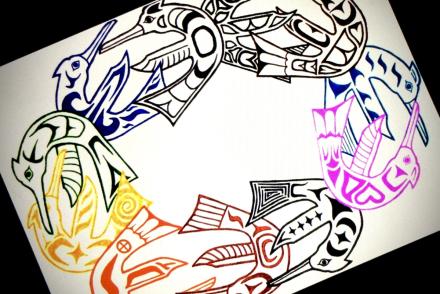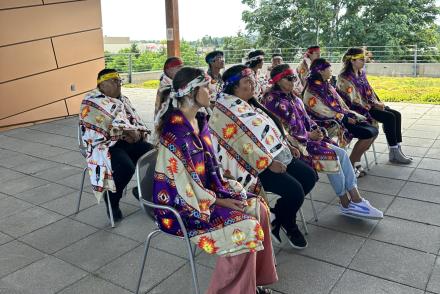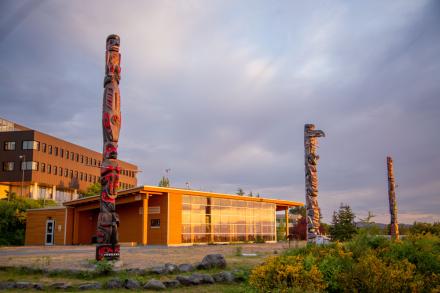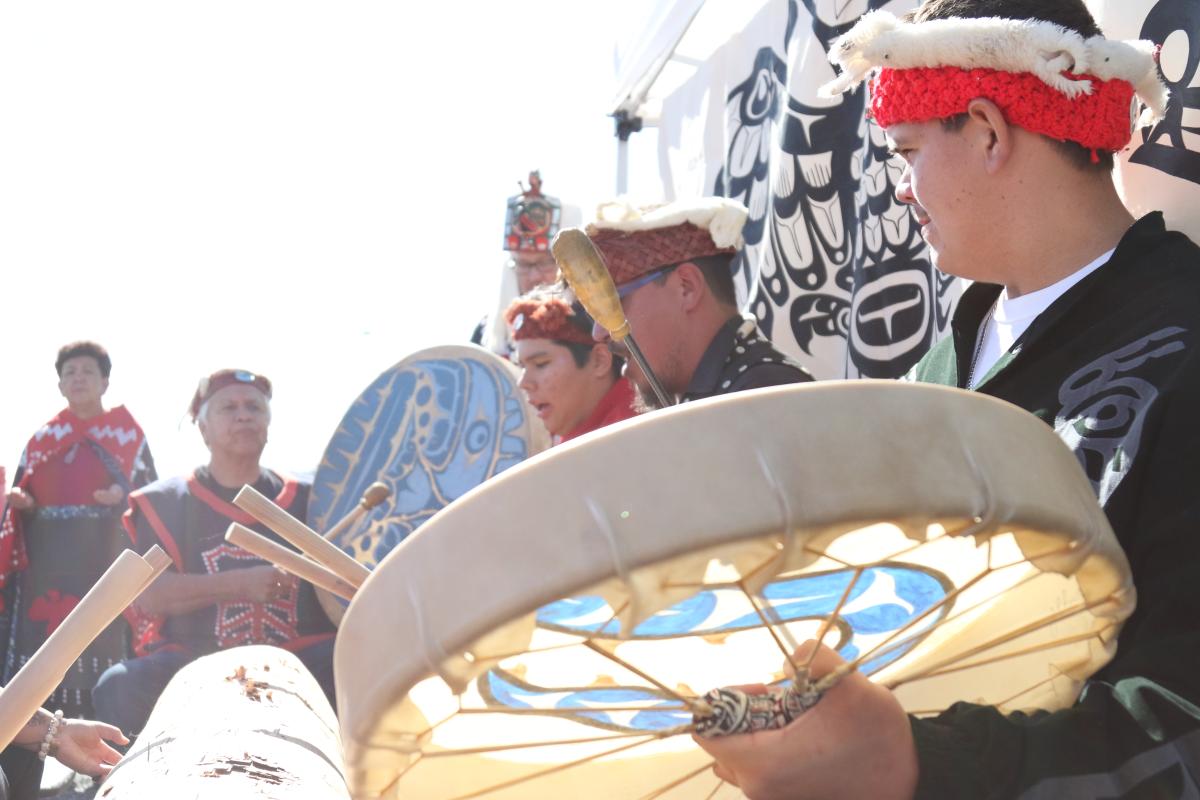
What we have learned so far through the EleV program
In 2016, Vancouver Island University, Indigenous communities and the Mastercard Foundation came together to talk about how to better support Indigenous learners. The goal was to improve access to post-secondary education and better support the transition into meaningful careers. In 2017, the Mastercard Foundation’s EleV Program was created with the goal of transforming education systems in a way that is led by Indigenous youth and communities.
Communities identified funding as one of the biggest barriers to post-secondary education for Indigenous youth. The EleV program at VIU began by offering scholarships and extra services and supports for Indigenous learners at VIU. The goal was to support 500 Indigenous learners.
Indigenous Education Navigators and an Indigenous Employment Navigator were hired to walk beside students supported by these scholarships. Navigators identified and worked to remove any barriers for students. They also assisted students searching for rewarding careers.
Heather Burke, a learning facilitator with the EleV program, summarizes what was learned in the first six years of the program.
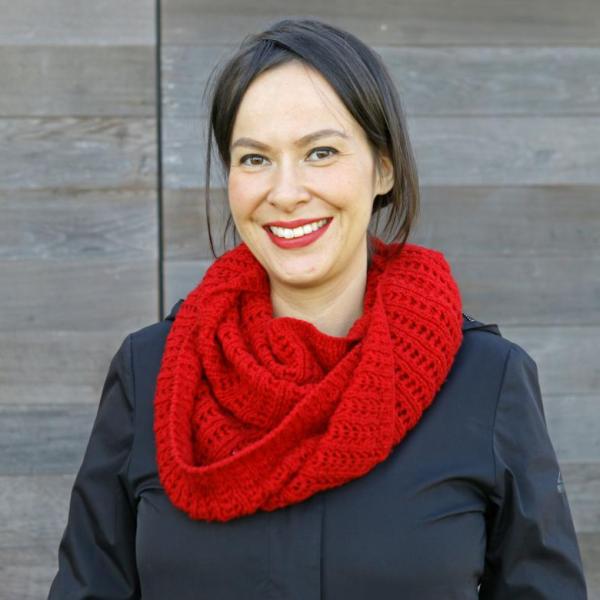
“My educational journey at Vancouver Island University has been met with immense support from my Indigenous Education Navigator. Being an Indigenous student has given me the privilege of having endless opportunities for personal and professional growth with the help of advocacy. They've helped me find connections with my cultural identity while teaching me how to cultivate my inner strength. EleV has given me more pathways to fulfilling my educational dreams.”
- Janelle Minoza, Bachelor of Social Work student
What did we do?
Scholarships
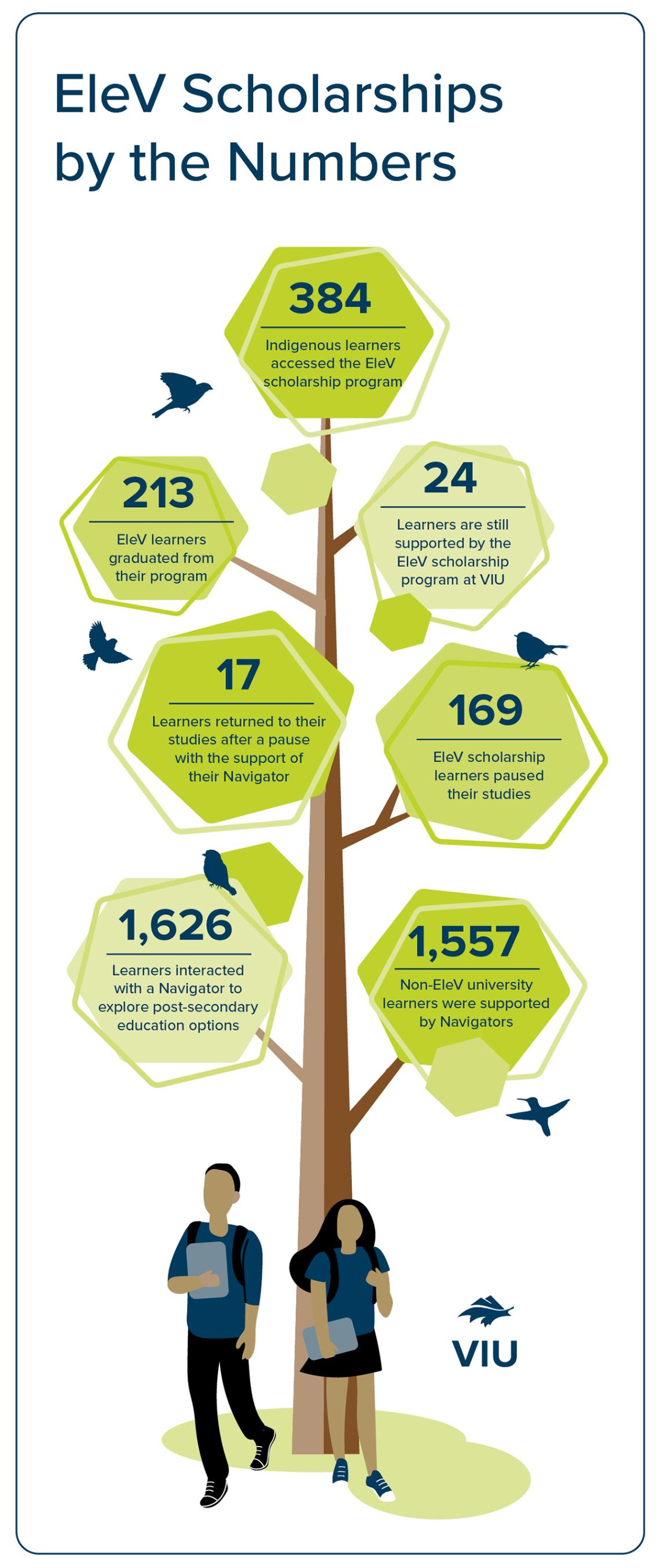
EleV scholarships by the numbers
Nations identified 384 learners on post-secondary education waitlists with their Nations who could be matched with EleV scholarships and a living allowance. Indigenous Education Navigators worked with 42 communities to give out scholarships and create a team approach to supporting learners.
Between 2017 and 2023:
- 1,626 learners interacted with a Navigator to explore post-secondary education options.
- 1,557 non-EleV university learners were supported by Navigators.
Because of changing needs during the pandemic and many learners deciding to pause their studies for a variety of reasons, conversations with communities resulted in directing resources towards programs and projects already happening in communities with high graduation rates. These programs and projects included land-based learning programs as well as in-community learning hubs.
EleV scholarships by the numbers:
Of the 384 students funded through the EleV program:
- 213 students graduated
- 17 returned to their studies after a pause
- 24 students are still underway
- 169 paused their studies
Relational land-based learning
For decades, Vancouver Island University has worked with communities and other partners to deliver VIU programs in local First Nations communities. Called Relational Land-based Learning programs, they often include elements of local culture and knowledge. EleV supported learners taking the following programs in six different First Nations:
- Early Childhood Education and Care program
- Stewardship Technician Training program
- Aboriginal Construction Certificate program
Programs offered in communities lead to better education and employment outcomes for Indigenous youth. These programs typically have high graduation rates and students often find jobs immediately. There were also shifts in the way university professors teach and learn from their students with the inclusion of community, family, land and language in the program. For example, many of the graduates from the 2020-21 Aboriginal Construction program offered in the remote First Nations of Ka:'yu:'k't'h' /Che:k:tles7et'h' are working at home in their community and want to continue their learning by getting their red seal and/or specialized training in infrastructure, surveying and more to take on future projects. The Nations no longer have to hire costly services from outside the community for things like home repairs. The students’ skills also align with the Nations’ goals to build more homes and address infrastructure needs.
“Those who moved through the trades sampler and upgrading and into the Aboriginal Construction program share a pride with others who have also made it,” said Daniel Blackstone, Community Coordinator. “They are in the new place where they can address challenges based on what they learned and the ripple effect of that is far reaching because it raises the standards of the community, not just the people in the home, it also raises the standards for visitors.”
In-community learning hubs
EleV supports two learning coaches in communities. Learning coaches work with students at all ages and stages of their educational journeys. Learning hubs address barriers to education such as transportation, childcare, food security, housing and more and support youth with education and employment goals. They are not attached to one specific university and provide supports specific to local needs, culture and relationships.
“When students come into the university they need to come in prepared way ahead of time,” said Mallory Bernard, Learning Coach with Snaw-Naw-As First Nation. “Having those gifts being passed over to our students from a traditional and cultural way of learning is very valuable to prepare them to step into a university setting.”
Internships
Eleven Indigenous learners participated in community internships in 2019. The program filled vacancies in three communities. One student found a rewarding career following graduation as a result (see video below). The program was paused during the pandemic, but it showed great potential to support students in finding rewarding careers.
Youth leadership
VIU’s ‘su’luqw’a’ Community Cousins program is not supported by EleV, but during the partnership Indigenous Education and Employment Navigators worked closely with ‘su’luqw’a’. The work included:
- delivering summer camps,
- working with learners from preschool to Grade 12, and
- cultivating a strong community of shush u’yulh (older brother/sister), who are VIU graduate mentors.
During the EleV partnership timeframe, 73 students were trained to become peer mentors.
Relational Knowledge grants
Five communities partnered with VIU to develop and enhance programs or projects. VIU faculty members, community members and Knowledge Holders are developing programs that combine Indigenous and Western knowledges. This leads to relevant learning experiences and credentials that Indigenous youth can access at home. These programs also align with community goals for economic development, succession planning and learner preparation.
Wellness supports
A wellness coordinator joined the EleV project briefly in response to the need to support learners struggling with trauma. The wellness coordinator offered counselling sessions in Shq’apthut, was available to students in community taking relational land-based learning programs, and created an online video wellness resource for Indigenous students called Healing the Heart and Mind. The work highlighted the need for trauma-informed teaching education for professors and the importance of Indigenous employee well-being and self-care.
What did we learn?
Throughout years of walking together through the EleV Learning Partnership with Indigenous youth, we learned several key things that will enable us to build on the partnership moving forward. One of the biggest learnings was that scholarships did fill a gap in post-secondary funding given to communities by Indigenous Services Canada, but they did not show Indigenous-led solutions to funding barriers in post-secondary education. Communities told us scholarships are an important tool to support learners to access education, who then return to work and contribute to the goals of communities and there are other partners who provide scholarships for Indigenous youth. Below are some highlights from years of learning collectively with a focus on facilitating learner access and success at post-secondary and transitions to meaningful employment.
- More areas of the university and others outside of the university need to be involved to increase collaboration and reduce duplication of efforts.
- Navigators may move to other departments within the University to better align their work with others doing similar work. This could lead to greater communication, collaboration and useage of transition programming the university already offers.
- There is room to expand relationships between community learning spaces and campus supports, services and instructors.
- Communities highlighted the importance of supporting education specific to local needs, culture and relationships. VIU must be responsive and provide tools to uphold the learning journey, whether it is happening on campus or in community.
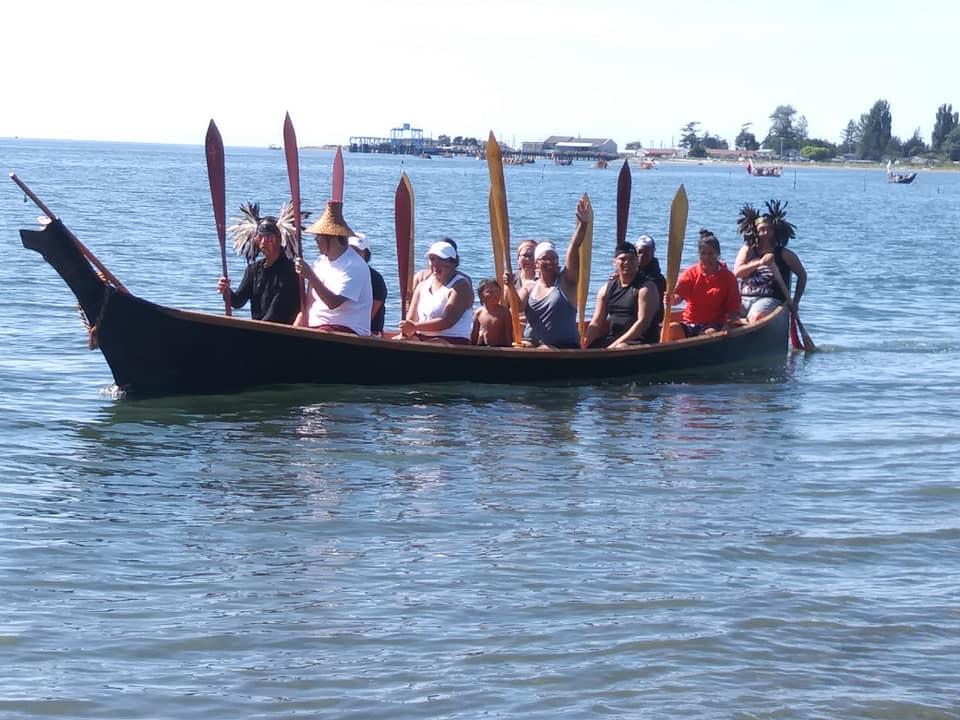
What’s next?
After six years, the partnership is at an important point in its evolution. Since 2017, time was spent building relationships and developing new ways of working together. There were big steps forward and some backward. Several teachings emerged about education models that fit learners in their local contexts such as relational land-based learning, learning hubs and learning coaches, and relational knowledge grants. We know these programs enable learners to reach their aspirations in alignment with those of their communities and are important for understanding where to go from here. The learning leads us to these programs as scaffolding for the EleV Learning Partnership going forward, with communities making decisions about how these programs look and feel in their local contexts. As we continue to weave a narrative of change together with “all our relations” we know we have a foundation of teachings to help us build on the partnership.

“Those who moved through the trades sampler and upgrading and into the Aboriginal Construction program share a pride with others who have also made it,” said Daniel Blackstone, Community Coordinator. “They are in the new place where they can address challenges based on what they learned and the ripple effect of that is far reaching because it raises the standards of the community, not just the people in the home, it also raises the standards for visitors.”

